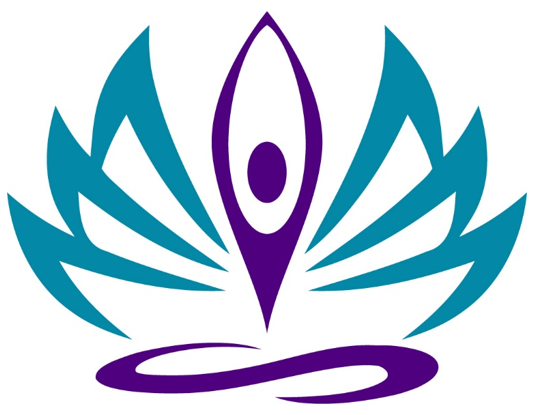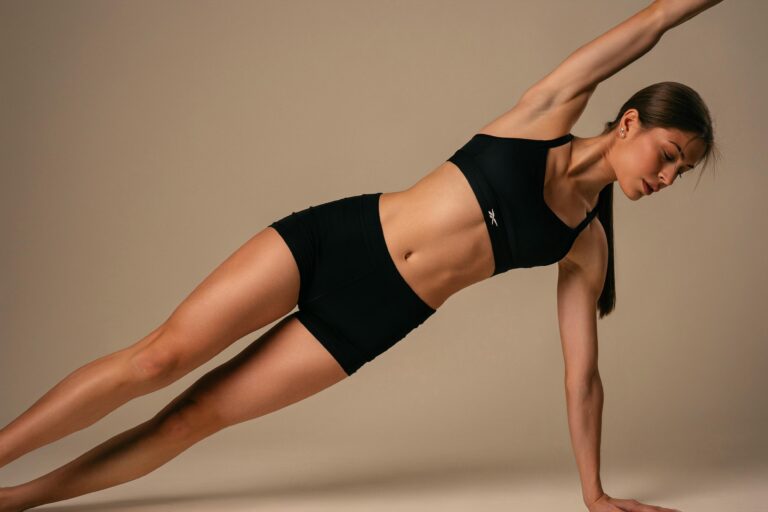Twisting postures for the entire spine: biomechanical principles and effective practice
Twists are a central component of yoga to improve flexibility, mobility and stability of the spine. However, in order to develop the full effect of these asanas and avoid unnecessary strain, a basic understanding of the biomechanics of the spine is required. In this article, you will learn how twisting poses affect the different sections of the spine and which biomechanical principles you should observe in order to perform them effectively and safely.
Biomechanics of the spine in rotational postures
The spine is divided into three main sections, which differ in their structure and mobility:
- The cervical spine (cervical spine) - Very flexible, especially in rotation
- The thoracic spine (thoracic spine) - the main actor in rotary movements
- The lumbar spine (lumbar spine) - more specialized in flexion and extension, with limited rotational ability
Cervical spine: The role of the head in twists
The top two cervical vertebrae (atlas and axis) are particularly designed for rotational movements. This is where most of the head rotation occurs. We often have the impression that we are in a deep rotational posture, but have actually mainly rotated the head and only slightly rotated the rest of the spine.
Thoracic spine: The center of rotation
Due to its connection with the ribs, the thoracic spine has limited mobility in flexion and extension, but is particularly well suited to rotational movements. Most twisting poses in yoga aim to optimize rotation in the thoracic spine. Due to our natural asymmetry, it is easier for most people to rotate the thoracic spine counterclockwise than clockwise, which is partly due to increased muscle tension in the anterior chest area on the right.
Lumbar spine: stability instead of rotation
The lumbar spine is biomechanically optimized for flexion and extension, while its ability to rotate is severely limited. Here, too, the natural asymmetry of every human being is noticeable, as our lumbar spine already has a very slight clockwise rotation, which is due in particular to the diaphragm being more pronounced on the right side.
Biomechanical principles for safe and effective rotational postures
- Dynamic interaction of pelvis and spine
Depending on the position of the legs and pelvis, a rotational posture can be made easier or more difficult. For example, a neutrally aligned pelvis favors rotation in the thoracic spine, while one-sided pelvic rotation can lead to compensatory patterns in the lumbar spine. - Breath to support the rotation
Conscious breathing enhances the effect of twists. Inhaling naturally lengthens the spine, while exhaling contributes to increased stability and is therefore often used in yoga to go deeper into the rotation. - Avoidance of compensatory movements
People with a pronounced anterior pelvic rotation (e.g. with a hollow back/anterior pelvic tilt) tend to rotate excessively out of the lumbar spine, as their thoracic spine often remains in an extended position. In such cases, preparatory exercises help to improve the flexibility of the thoracic spine and enable a healthy distribution of rotation. - Active muscle control instead of passive stretching
Twisting postures should not be forced through maximum "twisting", but should be actively supported through targeted muscle tension. The oblique abdominal muscles, the gluteus medius and the trunk stabilizers in particular are essential for performing the twist functionally.
Effective rotational postures and their biomechanical focus
I have recorded a 90-minute yoga class with twisting postures for the entire spine:
If you don't have time for a whole video or would prefer to do the exercises yourself, you will find a few twisting poses from the video with descriptions below:
1. Ardha Matsyendrasana (The half twist pose)
The main focus of this asana is on the rotation of the thoracic spine.
- Sit in Sukhasana (cross-legged position)
- As you exhale, turn from the thoracic spine towards your right shoulder
- Place your right hand on the floor behind you and your left hand on your right knee or thigh
- With each inhalation you straighten up more and with each exhalation you move a little deeper into the rotation
- Hold the twist for about 30 seconds, then come over the center into the twist to the left side.
- Repeat the exercise 2-4 times on each side. In between, change the "crossing" of your legs while sitting cross-legged
Important: Keep your pelvis stable and initiate the rotation from the BWS

2. parivrtta parsvakonasana (the twisted angle)
The main focus of this asana is on the rotation of the thoracic spine. It also trains balance and lateral core stability.
- Come into Warrior II pose: Bring your back (left) foot parallel to the short side of the mat. Then take a big step forward with your right foot and point the toes of your front foot towards the front end of the mat. Your back left leg is straight, your front leg is bent and your right knee is over your ankle.
- Slowly come into a twist by placing your left hand on the outside of your right foot. Use a yoga block to help you if necessary.
- Make sure you remain stable in the pelvis and breathe deeply.
- Stay in this pose for 5 deep breaths, then change sides.
Important: Avoid excessive rotation from the lumbar spine

3. jathara parivartanasana (the lying twist)
The main focus of this asana is on gently mobilizing the thoracic spine and relaxing the core muscles.
- Lie on your back
- Bring your right leg to a 90° angle and your arms outstretched at a 90° angle next to your body.
- Bring your right knee over to your left side. You can also bring your left hand onto your knee.
- Gently activate the abdominal muscles slightly and push the right side of the pelvis away from you to align the spine
- Look in the direction of your right hand.
- Hold this rotation for approx. 30 seconds and then switch to the other side.
- Important: make sure you actively control the rotation with your breath

4. parivrtta utkatasana (the twisted chair pose)
The main focus of this asana is on core strength, stability and rotation.
- Sit in the chair with your feet hip-width apart and your arms stretched upwards.
- Start to bend your knees and put more weight on your heels.
- Then bring your palms together in front of your chest and then bring your right elbow to the outside of your left knee.
- Make sure that your spine remains stretched.
- Stay in this position for approx. 30 seconds and breathe deeply. Then switch sides.
- Important: pay attention to a balance between pelvic stability and spinal mobility

Conclusion
Twisting postures are a valuable practice to promote mobility of the thoracic spine. Conscious alignment that takes biomechanical principles into account prevents compensatory patterns and can help to reduce natural asymmetries in the body so that they cannot lead to discomfort in the first place.
If yoga teachers and practitioners deepen their understanding of the function of the individual sections of the spine, they can use twisting postures in a more targeted way and thus contribute to spinal health in the long term.







